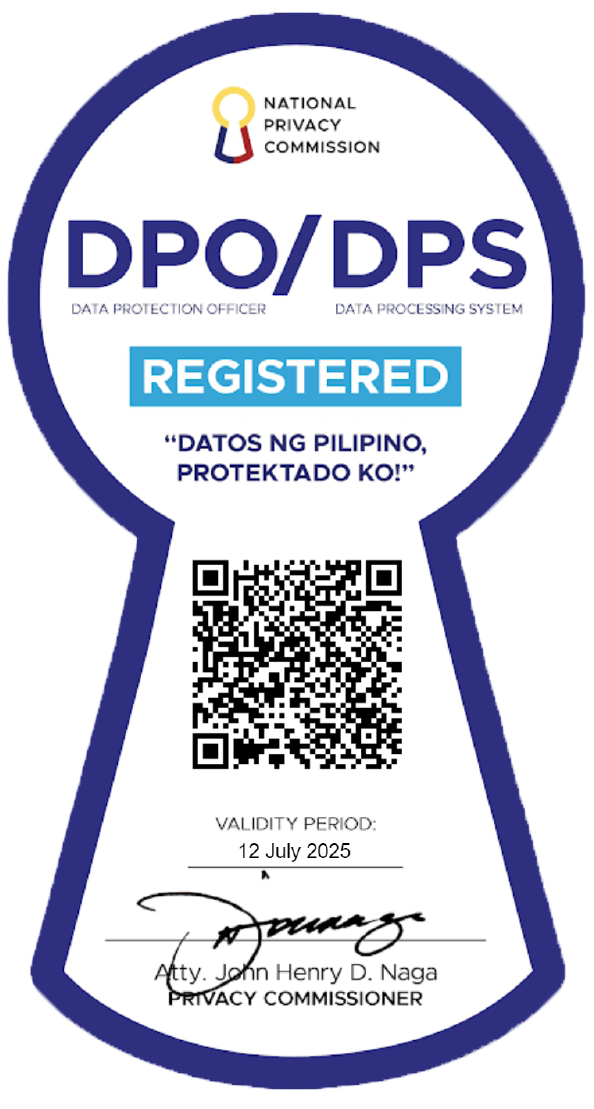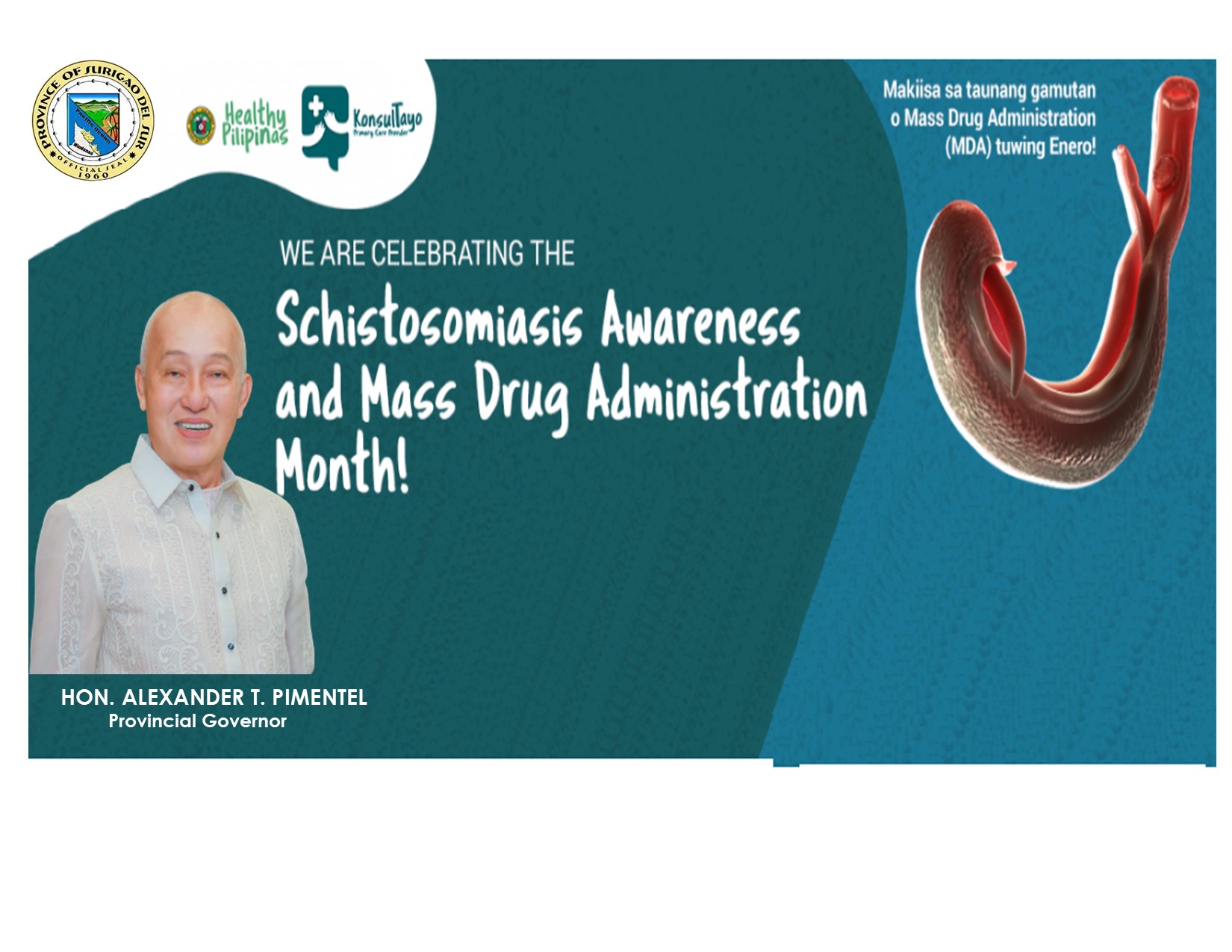Schistosomiasis Awareness and Mass Drug Administration Month
January is Schistosomiasis Awareness and Mass Drug Administration Month!
Schistosomiasis is a disease caused by the parasite Schistosoma japonicum also known as the blood fluke. It remains to be endemic in the Philippines especially in the Samar and Leyte provinces and Negros Occidental in Visayas. In Luzon, there are few endemic areas such as Mindoro Oriental, Sorsogon and Cagayan.
How does an individual get Schistosomiasis?
The parasites are stored in snails that live in waters, rice fields or rivers. Small parasites leave the snail and travel in water to infect humans by entering broken skin such as wounds. Once the parasite enters, it travels in the blood to reach the liver where they can settle and reproduce for years without being detected. Once they have produced abundant amounts of eggs, the eggs can travel in the blood and into the intestines where they are excreted in the stools. Thus, parasite eggs can be transmitted when an infected person defecates in open water.
Who is at risk of having Schistosomiasis?
The risk is higher for individuals living in the above-mentioned endemic areas mostly in Mindanao. Males have greater risk due to frequent water contact. Children aged 5-14 years old who often play in rice fields as well as adults are at risk of getting infected.
What are the signs and symptoms?
During the early stage, an individual may experience itchiness of the skin where the parasites entered, fever, abdominal pain and diarrhea. This is also known as the Katayama fever or “snail fever” where an individual experiences easy fatigability, respiratory symptoms such as coughing, joint pains, muscle pains and fever. As the infection progresses, the parasites may damage the liver leading to enlargement of the abdomen as seen in infected children. The worms may also affect blood circulation in the lungs which may cause wheezing and coughing. Mature worms may also block vessels in the brain and cause seizures, numbness and even stroke.
How is it treated?
Schistosomiasis is treated with antiparasitic medication such as Praziquantel which is considered safe and highly effective in single or divided doses against the Schistosome parasite. Side effects are due to the reaction of dying worms such as abdominal pain or discomfort, nausea, decreased appetite, dizziness, headache and fever but they are only mild and transient.
How can it be prevented?
In endemic areas, the main control strategy is through mass drug administration of Praziquantel because some individuals may be asymptomatic. Main target groups are school-age children because they are the most vulnerable and to prevent possible short term and long-term consequences of schistosomiasis to their adulthood. To make these efforts sustainable, health education and investment in clean water supply and sanitation, environmental and snail control need to be a part of the overall strategy. The following are the tips for prevention of Schistosomiasis transmission:
1. Take antiparasitic medications such as Praziquantel when living or traveling to endemic areas. Antiparasitic medications are provided free through mass drug administration campaigns by the government every January especially in endemic areas. The medication is considered safe and effective and may cure early asymptomatic infections and prevent transmission.
2. Wear protective boots when walking into watery puddles or rice fields. Treat wounds (especially in the feet) as soon as possible and prevent contact with rivers or rice fields. Parasites are usually found in snail infested waters and may enter breaks in the skin.
3. Environmental control. This includes alteration of the snail habitat by:
● Draining breeding sites and proper management of irrigation systems, removal of shade and shelter from the sun by clearing vegetation around bodies of water
● Removal of shade of shade or shelter from the sun by clearing vegetation around bodies of water
● Prevention of breeding on the banks of streams or irrigation canals by lining these with concrete or making them more perpendicular
● Acceleration of flow of water by proper grading and cleaning of the stream bed and removal of debris
● Construction of ponds if the area cannot be drained
● Covering snail habitats with landfills
4. Do not defecate in the open. Defecation in the open spreads worm eggs into the soil, water or environment which may come in direct contact with the skin, water system or food.
5. Maintain a healthy body through good nutrition to reduce the risk for infections including parasitic infections. Maintaining a healthy body through a balanced diet with plenty of fruits and vegetables can strengthen an individual’s resistance against infection and prevent severe forms of schistosomiasis.
References:
[1] Belizario VY, de Leon WU. (2013). Medical Parasitology in the Philippines, 3rd ed. University of the Philippines Press. Diliman, Quezon City, Philippines.
[2] Riedel S, Morse SA, Mietzner T, Miller S. (2019). Jawetz, Melnick, & Adelberg’s Medical Microbiology, 28th ed. McGraw-Hill Education. United States of America.
[3] https://nnc.gov.ph/regional-offices/mindanao/region-xi-davao-region/6944-january-is-schistosomiasis-awareness-and-mass-drug-administration-month

